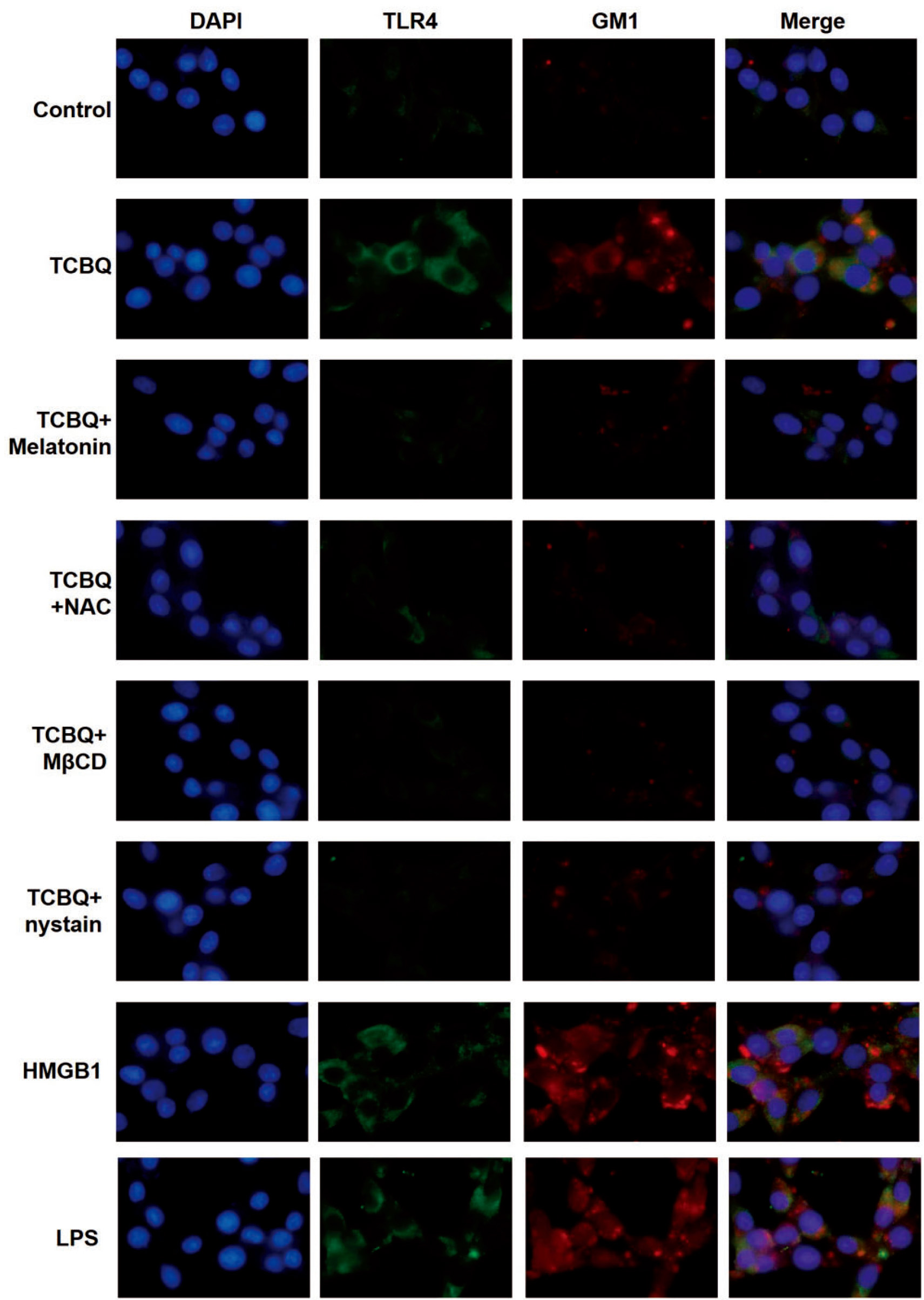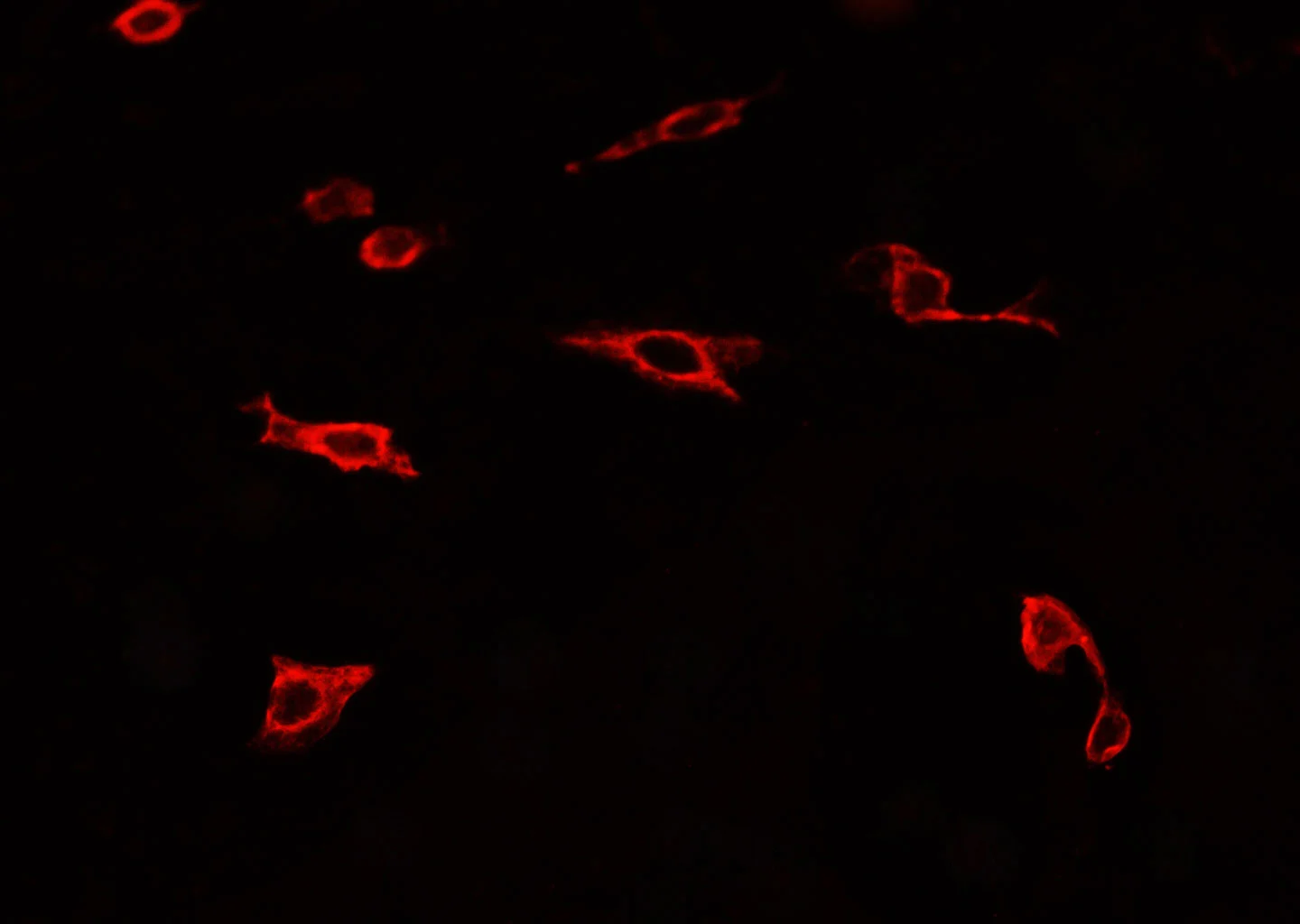TLR4 antibody [HTA125]
GTX75737
ApplicationsFlow Cytometry, ImmunoFluorescence, ImmunoPrecipitation, Western Blot, ImmunoCytoChemistry, Neutralisation/Blocking
Product group Antibodies
TargetTLR4
Overview
- SupplierGeneTex
- Product NameTLR4 antibody [HTA125]
- Delivery Days Customer9
- Application Supplier NoteFACS: 1/10-1/25. *Optimal dilutions/concentrations should be determined by the researcher.Not tested in other applications.
- ApplicationsFlow Cytometry, ImmunoFluorescence, ImmunoPrecipitation, Western Blot, ImmunoCytoChemistry, Neutralisation/Blocking
- CertificationResearch Use Only
- ClonalityMonoclonal
- Clone IDHTA125
- Concentration1 mg/ml
- ConjugateUnconjugated
- Gene ID7099
- Target nameTLR4
- Target descriptiontoll like receptor 4
- Target synonymsARMD10, CD284, TLR-4, TOLL, toll-like receptor 4, hToll, homolog of Drosophila toll, toll like receptor 4 protein
- HostMouse
- IsotypeIgG2a
- Protein IDO00206
- Protein NameToll-like receptor 4
- Scientific DescriptionThe protein encoded by this gene is a member of the Toll-like receptor (TLR) family which plays a fundamental role in pathogen recognition and activation of innate immunity. TLRs are highly conserved from Drosophila to humans and share structural and functional similarities. They recognize pathogen-associated molecular patterns that are expressed on infectious agents, and mediate the production of cytokines necessary for the development of effective immunity. The various TLRs exhibit different patterns of expression. This receptor has been implicated in signal transduction events induced by lipopolysaccharide (LPS) found in most gram-negative bacteria. Mutations in this gene have been associated with differences in LPS responsiveness. Multiple transcript variants encoding different isoforms have been found for this gene. [provided by RefSeq, Jan 2012]
- Storage Instruction-20°C or -80°C,2°C to 8°C
- UNSPSC12352203
References
- Zhang X, Su H, Yu H, et al. A Polysaccharide From Eupolyphaga sinensis Walker With Anti-HBV Activities In Vitro and In Vivo. Front Pharmacol. 2022,13:827128. doi: 10.3389/fphar.2022.827128Read this paper
- Kogan E, Berezovskiy Y, Blagova O, et al. Morphologically, immunohistochemically and PCR proven lymphocytic viral peri-, endo-, myocarditis in patients with fatal COVID-19. Diagn Pathol. 2022,17(1):31. doi: 10.1186/s13000-022-01207-6Read this paper
- Chen LL, Lee MH, Chang CL, et al. Suppression of Inflammatory and Fibrotic Signals by Cinnamon (Cinnamomum cassia) and Cinnamaldehyde in Cyclophosphamide-Induced Overactive Bladder in Mice. Evid Based Complement Alternat Med. 2021,2021:5205759. doi: 10.1155/2021/5205759Read this paper
- Chien LH, Wu CT, Deng JS, et al. Salvianolic Acid C Protects against Cisplatin-Induced Acute Kidney Injury through Attenuation of Inflammation, Oxidative Stress and Apoptotic Effects and Activation of the CaMKK-AMPK-Sirt1-Associated Signaling Pathway in Mouse Models. Antioxidants (Basel). 2021,10(10). doi: 10.3390/antiox10101620Read this paper
- Weng J, Han X, Zeng F, et al. Fiber scaffold bioartificial liver therapy relieves acute liver failure and extrahepatic organ injury in pigs. Theranostics. 2021,11(16):7620-7639. doi: 10.7150/thno.58515Read this paper
- Huang CY, Deng JS, Huang WC, et al. Attenuation of Lipopolysaccharide-Induced Acute Lung Injury by Hispolon in Mice, Through Regulating the TLR4/PI3K/Akt/mTOR and Keap1/Nrf2/HO-1 Pathways, and Suppressing Oxidative Stress-Mediated ER Stress-Induced Apoptosis and Autophagy. Nutrients. 2020,12(6). doi: 10.3390/nu12061742Read this paper
- Liu S, Xie Y, Luo W, et al. PE_PGRS31-S100A9 Interaction Promotes Mycobacterial Survival in Macrophages Through the Regulation of NF-κB-TNF-α Signaling and Arachidonic Acid Metabolism. Front Microbiol. 2020,11:845. doi: 10.3389/fmicb.2020.00845Read this paper
- Liu C, Tang X, Zhang W, et al. 6-Bromoindirubin-3'-Oxime Suppresses LPS-Induced Inflammation via Inhibition of the TLR4/NF-κB and TLR4/MAPK Signaling Pathways. Inflammation. 2019,42(6):2192-2204. doi: 10.1007/s10753-019-01083-1Read this paper
- Cao SG, Chen R, Wang H, et al. Cryptotanshinone inhibits prostaglandin E2 production and COX-2 expression via suppression of TLR4/NF-κB signaling pathway in LPS-stimulated Caco-2 cells. Microb Pathog. 2018,116:313-317. doi: 10.1016/j.micpath.2017.12.027Read this paper
- Chao W, Deng JS, Huang SS, et al. 3, 4-dihydroxybenzalacetone attenuates lipopolysaccharide-induced inflammation in acute lung injury via down-regulation of MMP-2 and MMP-9 activities through suppressing ROS-mediated MAPK and PI3K/AKT signaling pathways. Int Immunopharmacol. 2017,50:77-86. doi: 10.1016/j.intimp.2017.06.014Read this paper







